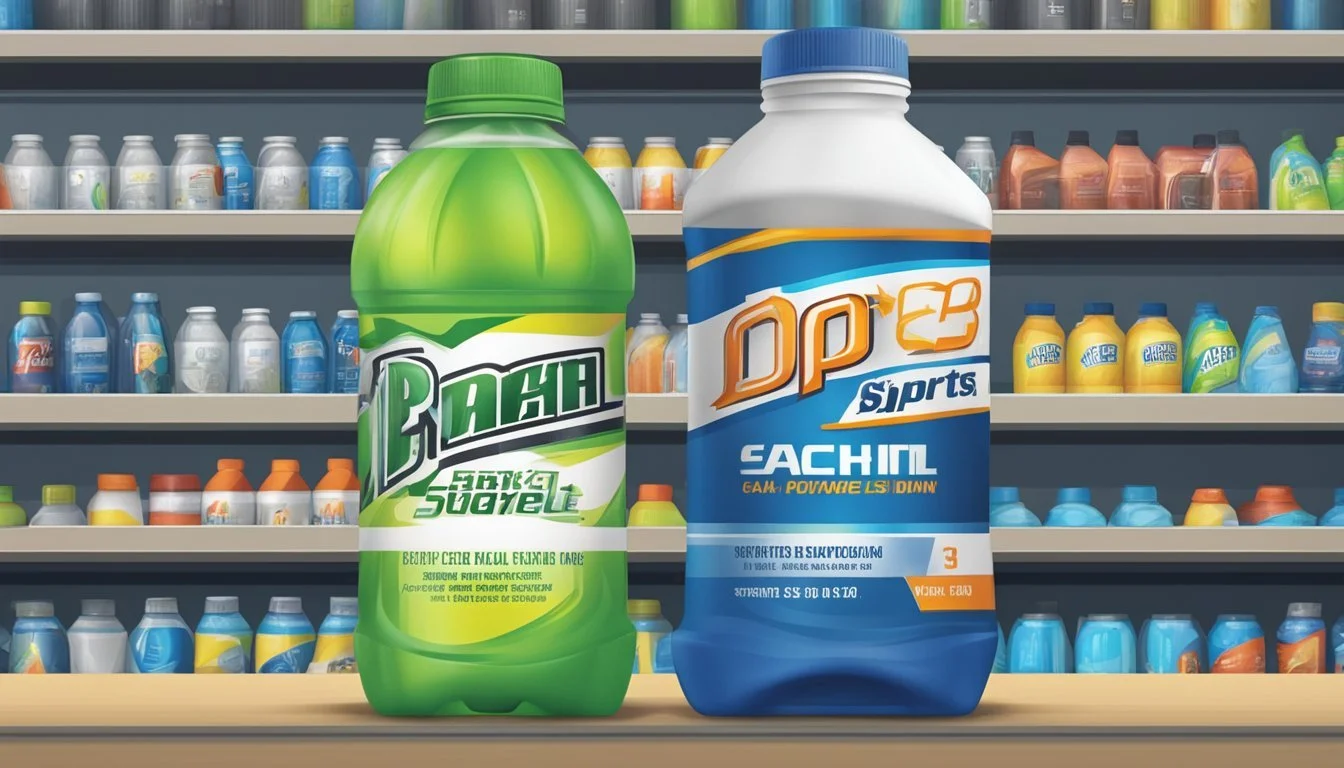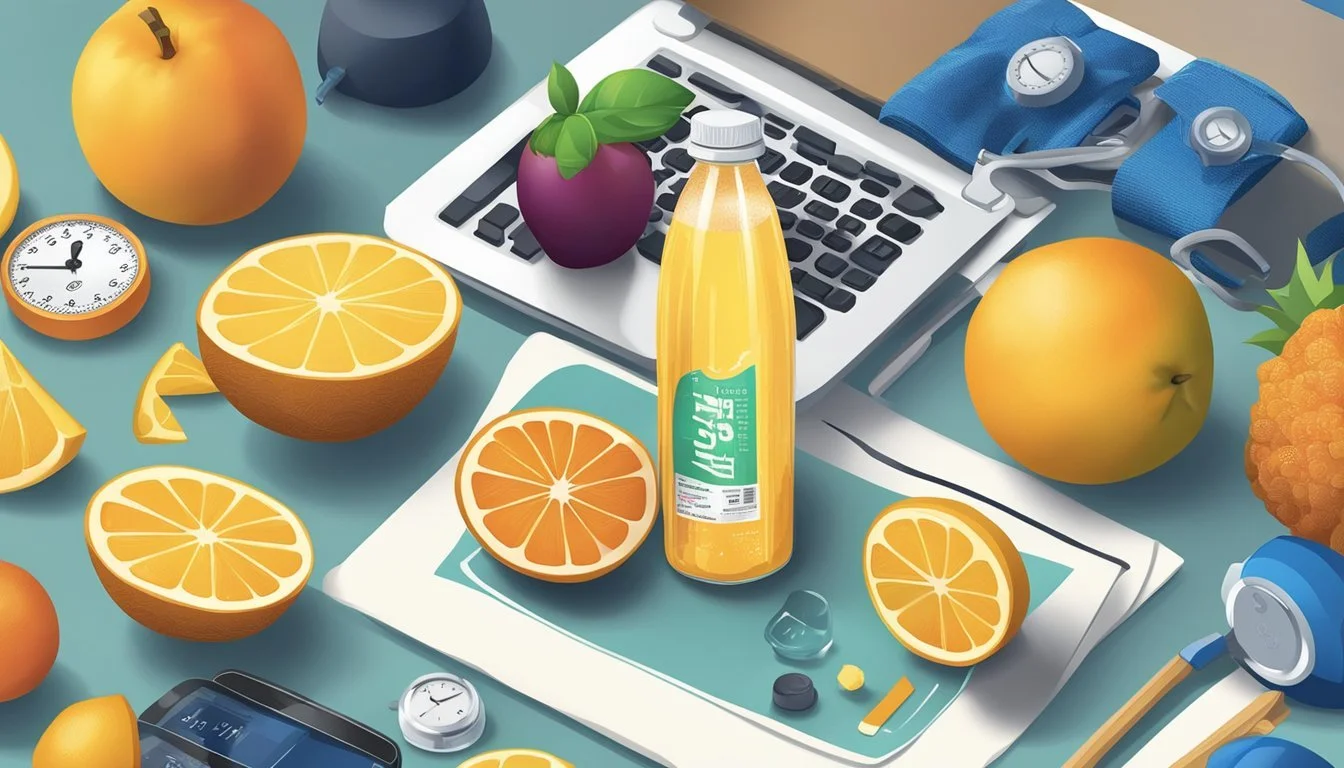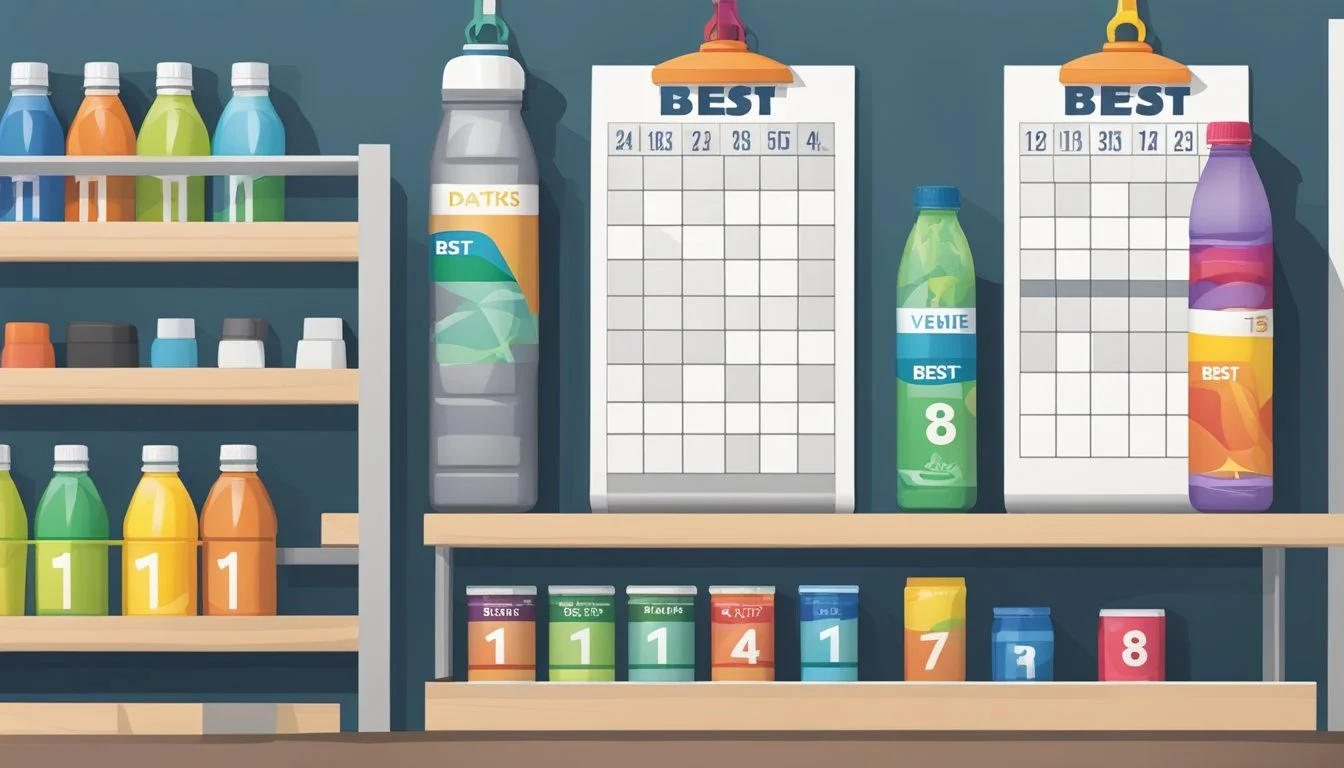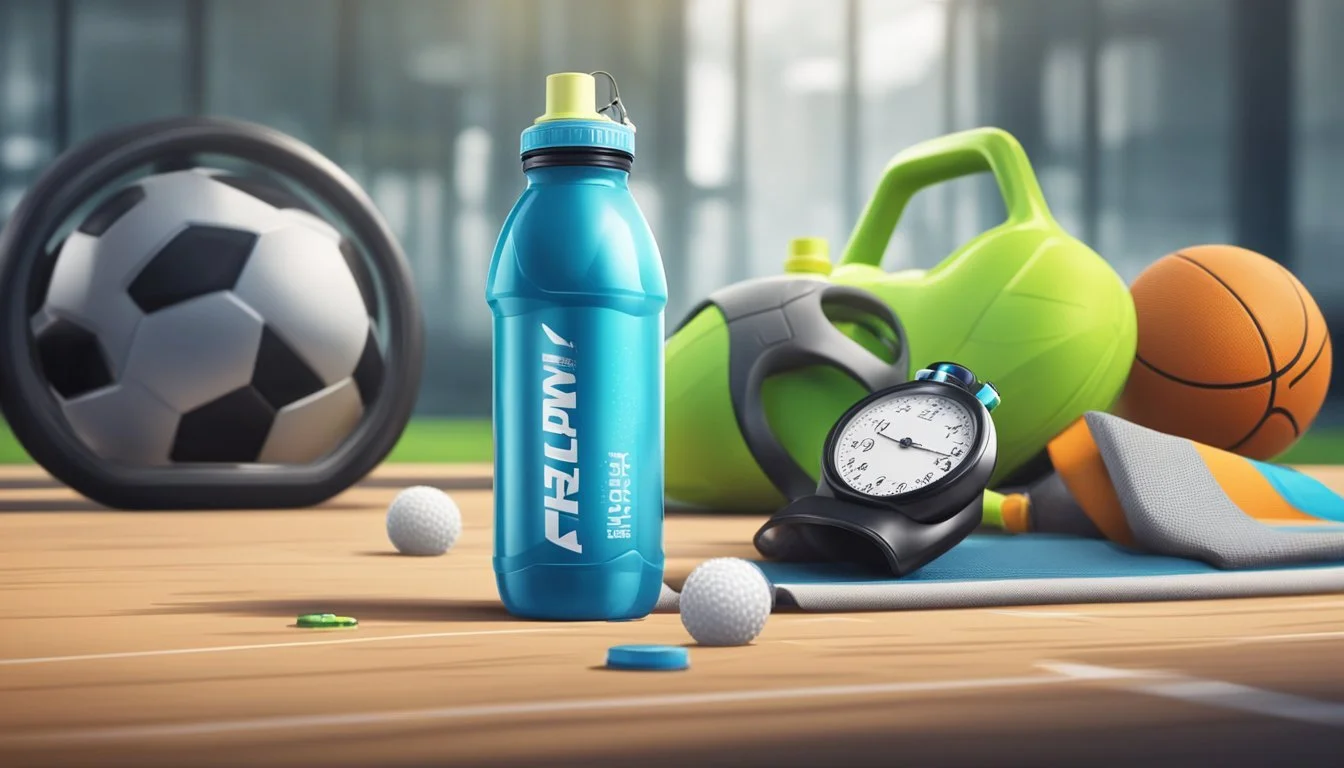How Long Do Sports Drinks Last?
Shelf Life and Storage Tips
Sports drinks, popular among athletes and those needing quick hydration, come with varying shelf lives which are influenced by their storage conditions and ingredients. An unopened bottle of sports drinks such as Gatorade or Powerade can generally last well past the printed expiry date, approximately around 9 months if stored properly. The key is to keep the bottles in a cool, dry place away from direct sunlight to maintain their best quality.
Once opened, the clock starts ticking on the lifespan of a sports drink. They typically last between 3 to 5 days when kept refrigerated. During this period, they’re considered to be at their optimal quality, providing the balance of electrolytes and energy as they were designed. It's also important to consider the integrity of the packaging; if the bottle remains undamaged, the drink inside is more likely to stay consumable within this timeframe.
Understanding the longevity of sports drinks ensures not only their efficacy but also the safety of their consumption. Storing them correctly and paying attention to their expiry dates can prevent spoilage and potential food safety issues, enabling these drinks to serve their purpose in rehydration and athlete performance support effectively.
What Are Sports Drinks?
Sports drinks are beverages designed to help athletes rehydrate, as well as restore electrolytes, carbohydrates, and other essential minerals lost during vigorous exercise. These drinks are formulated to provide a balanced supply of energy, maintain hydration, and support nutrition in the body after intense physical activity.
A typical sports drink contains:
Water: The primary ingredient for rehydration.
Electrolytes: Such as sodium, potassium, calcium, magnesium, and chloride. These minerals play a crucial role in maintaining the body's electrical charges necessary for muscle function and other processes.
Sugars and Carbohydrates: These provide an immediate energy source. Carbohydrates are vital for sustaining energy levels during extended periods of exercise.
Flavor: Added for palatability, encouraging increased fluid intake.
These components are crucial for athletes as they not only replace lost fluids but also supply nutrients that support metabolic processes during high-intensity workouts or sports. The presence of electrolytes in sports drinks is particularly important because they help to maintain nerve and muscle function, balance blood pressure, and help rebuild damaged tissue. Additionally, the carbohydrates found in these drinks can enhance endurance and performance.
Health-conscious individuals often scrutinize the sugar content in sports drinks, as the added sugars can have negative implications if consumed excessively outside of athletic needs. It's essential for consumers to choose a sports drink that aligns with their specific energy requirements and health and nutrition goals.
Health Benefits and Risks
This section examines the benefits sports drinks can offer in terms of hydration and electrolyte balance, as well as their role in exercise performance. At the same time, it highlights the potential health risks associated with their consumption, especially when not utilized properly.
Hydration and Replenishment
Sports drinks are designed to hydrate the body more efficiently than water during intense activities by replacing fluid and electrolytes lost through sweat. They often contain a mix of water, electrolytes (such as sodium and potassium), and sugar, which can replenish the body's water supply and provide a quick energy source.
Electrolyte Balance
Maintaining electrolyte balance is crucial for bodily functions such as muscle contractions and nerve signaling. Sports drinks rebalance electrolyte levels during prolonged exercises, helping to prevent dehydration and conditions related to electrolyte imbalances, like cramping.
Exercise and Endurance
For athletes and individuals engaged in prolonged or high-intensity workouts, sports drinks can support endurance and enhance performance. They provide an energy boost and help to sustain energy levels due to their carbohydrate content.
Risks and Considerations
Despite their benefits, there are health risks to consider:
Overconsumption: Excessive intake may contribute to obesity and type 2 diabetes due to the high sugar content.
Children: They are more susceptible to the effects of added sugars and may be at a higher risk of weight gain.
Nutrition: Sports drinks should not replace water or nutritious beverages in one’s diet.
Illness: Individuals with health conditions like diarrhea or vomiting may require a different approach to hydration and electrolyte replenishment.
Sports and energy drinks are distinct entities, and it's important to note that energy drinks contain stimulants like caffeine, which are not typically found in sports drinks.
Storage Guidelines
Proper storage is critical in preserving the quality and safety of sports drinks. Adherence to recommended storage techniques ensures maximum freshness and prevents deterioration.
Unopened Bottles
Unopened sports drinks should be stored in a cool, dry place such as a pantry. They can be sensitive to extreme temperatures, so it's best to keep them away from direct sunlight and heat sources to prevent the degradation of flavors and nutrients. The shelf life of unopened sports drinks generally extends to about 9 months past the best by date printed on the bottle, but this can vary based on the preservatives used.
After Opening
Once opened, the clock starts ticking on freshness and hygiene. An opened bottle should not be stored at room temperature for more than a few hours, particularly if it has been handled during consumption. Food safety protocols dictate that an opened sports drink should be consumed within 3 to 5 days to ensure its quality and safety.
Refrigeration and Shelf Life
Refrigerating an opened sports drink is crucial for maintaining its quality. When stored in the refrigerator with a seal intact, sports drinks can last for approximately 3 to 5 days. Always check for changes in appearance or odor as indicators of spoilage, regardless of the expiry date. If the drink is in a plastic bottle, one should also be aware of the potential for chemical leaching if the bottle is subjected to high temperatures, so always keep it cool.
Identifying Spoilage
Sports drinks provide hydration and electrolytes, but they can spoil when mishandled or stored improperly. Recognizing the signs of spoilage is crucial for ensuring the quality and safety of the beverage. One must pay attention to visual cues, taste, smell, and odor to determine if a sports drink has gone bad.
Visual and Taste Indicators
When a sports drink begins to spoil, changes in its appearance can be the first sign. The liquid may appear cloudy or have floating particles that were not present when it was first opened. Color changes might also occur, indicating that the drink should not be consumed. In terms of flavor, if a sports drink tastes unusually sour or has developed an off-flavor compared to its original taste, it could be an indication that the drink is spoiled and should be discarded to avoid potential health risks.
Smell and Odor Checks
The odor of a sports drink is a reliable indicator of its freshness and quality. A fresh sports drink should have a pleasant, sweet smell corresponding to its flavor. If one detects a foul or unusual smell—often described as sour, rancid, or similar to the smell of fermentation—the sports drink has likely gone bad. Drinking a spoiled sports drink may pose health risks, as it could contain harmful bacteria, so it is imperative to trust one's senses and dispose of any drink that fails the smell check.
Factors Affecting Longevity
The shelf life of sports drinks is influenced by their ingredients, the quality of packaging, and storage conditions. Each of these factors plays a critical role in determining how long a sports drink remains safe to consume and effective in providing hydration and energy during physical activities.
Ingredients and Composition
Sports drinks typically contain water, sugar, salt, and electrolytes such as sodium and potassium. The ratio of these ingredients can affect the product's longevity. Drinks with a high sugar content may act as a preservative to some extent, but can also create an environment that supports bacterial growth if opened and improperly stored. Preservatives added to some sports drinks can extend their shelf life by inhibiting microbial growth.
Packaging and Sealing
The seal of a sports drink container ensures that the contents are kept uncontaminated. A tamper-evident seal is essential for maintaining the drink's integrity from production to consumption. Most sports drinks are packaged in plastic bottles, and the type of plastic can affect the drink's shelf life. High-quality plastic with a lower oxygen transmission rate can better preserve the contents.
Storage Conditions
Storage conditions have a significant impact on the longevity of sports drinks. Keeping them in a cool, dry place away from direct sunlight helps preserve their quality. Exposure to heat can result in the leaching of chemicals from the plastic bottle into the drink, while consistent and cool temperatures protect the integrity of the ingredients. It is recommended to consume sports drinks within 3-5 days once opened and stored in the refrigerator. Always check the best by date for unopened drinks to ensure the product is consumed while at its best quality.
Sports Drink Alternatives
In the pursuit of maintaining hydration and replenishing electrolytes, various alternatives to traditional sports drinks provide benefits ranging from natural ingredient profiles to customized nutrient content.
Natural Hydration Options
Natural hydration options often offer essential electrolytes and vitamins without added sugars and artificial ingredients. Two prime examples include:
Plain Water: The most fundamental hydrator, effective for short-duration exercises and everyday hydration needs.
Coconut Water: Contains natural electrolytes like potassium and magnesium, making it a suitable option for post-workout replenishment.
Fruit Juices: Diluted fruit juices, such as watermelon or tart cherry juice, can serve as sources of vitamins and antioxidants.
When choosing fruit juices, one should opt for those without added sugars to avoid unnecessary calorie intake.
Homemade Sports Drink Recipes
Homemade sports drinks allow for complete control over ingredients and can be tailored to individual tastes and nutritional requirements. Two simple recipes include:
Basic Electrolyte Drink:
1/4 tsp salt
1/4 cup lemon juice
1/4 cup honey
2 cups plain water or coconut water
Mix and add to a 1-liter bottle, top with water, and shake well.
Oral Rehydration Solution:
6 tsp sugar
1/2 tsp salt
1 liter clean water
Stir until fully dissolved and consume as needed for hydration.
Low-Calorie and Sugar-Free Choices
For those monitoring caloric intake or preferring sugar-free options, several alternatives can meet those needs:
Low-Calorie Sports Drinks: These are commercially available and typically contain artificial sweeteners to reduce caloric content.
Homemade Sugar-Free Hydrator:
Combine herbal tea or water with a pinch of salt and a squeeze of lemon or lime for flavor.
These alternatives provide the necessary hydration and electrolytes with minimal or no sugar and are ideal for weight-conscious individuals or those managing blood sugar levels.
Maximizing Athletic Performance
Athletic performance can be significantly impacted by hydration and nutrition. During prolonged physical activities, such as endurance sports, maintaining optimal fluid levels is critical. Dehydration leads to decreased performance, fatigue, and muscle cramping. Therefore, it is essential for athletes to replenish fluids regularly.
Electrolytes, such as sodium, potassium, and magnesium, are essential for hydration and nerve transmission. They aid in preventing cramps and help in the retention of fluids. Sports drinks like Gatorade, Powerade, and Propel are formulated to restore electrolytes lost during intense workouts.
Carbohydrates are a key energy source for athletes. Glucose fuels muscles during exercise, and adequate carbohydrate intake before and during exercise helps maintain glycogen stores, preventing early fatigue. Different sports drinks also include carbs, typically in the form of sugars, to sustain energy levels during a tough workout.
For endurance activities, the combination of fluids, electrolytes, and carbohydrates in sports drinks can be more beneficial than water alone. This is because water does not contain the additional energy or electrolytes that help sustain prolonged athletic performance.
Here's a brief comparison of fluids for rehydration:
Water Sports Drinks (e.g., Gatorade, Powerade) Replenishes fluids Replenishes fluids with added electrolytes and carbohydrates No extra nutrients May prevent muscle cramping and boost endurance Best for short, low-intensity workouts Best for endurance activities over an hour or high-intensity workouts
However, it's important to note, for lower-intensity or shorter workouts, water is often sufficient. Additionally, not all rehydration drinks are equal—some energy drinks can be high in caffeine and sugar but low in electrolytes, which may not be as effective for rehydration and could lead to further dehydration. Vitamin Water and All Sport offer alternatives, often with added vitamins, but athletes should read labels to ensure their needs are met.
In summary, understanding the role of hydration, carbohydrates, and electrolytes is paramount for athletes aiming to maximize performance, especially during endurance exercises or high-intensity workouts.
Usage and Recommendations
When consuming sports drinks, it is essential to consider the context of physical activity, daily wellness, and specific needs of different groups for optimal hydration and health benefits.
Optimal Use During Physical Activities
For endurance athletes or those engaged in prolonged physical activities, a general guideline suggests consuming 4 to 8 ounces of a sports drink every 15 to 20 minutes during exercise to effectively replenish electrolytes and maintain fluid levels. Individuals should start hydrating with water and switch to sports drinks as the duration exceeds 60 minutes to maintain a balance of electrolytes and energy.
Daily Intake for Health and Wellness
While sports drinks can supplement hydration, they should not replace water for daily consumption. For general health and wellness, individuals should prioritize water to maintain hydration. Sports drinks can be included in moderate amounts when usual water intake is complemented with light exercise, aiming to balance fluid levels without excessive intake of sugars and additives.
Guidelines for Specific Groups
Children: Light physical activity typically requires water; sports drinks may be considered for ongoing activities longer than 60 minutes.
Adults: For adults engaging in moderate to high-intensity workouts, sports drinks can help improve athletic performance and hydration when used in conjunction with water.
Special Considerations: Individuals with specific health considerations should follow medical advice, as a sports drink's contents might interfere with health conditions or medication.
In all cases, individuals should listen to their body's signals and adjust intake to suit their hydration needs without relying solely on sports drinks.










